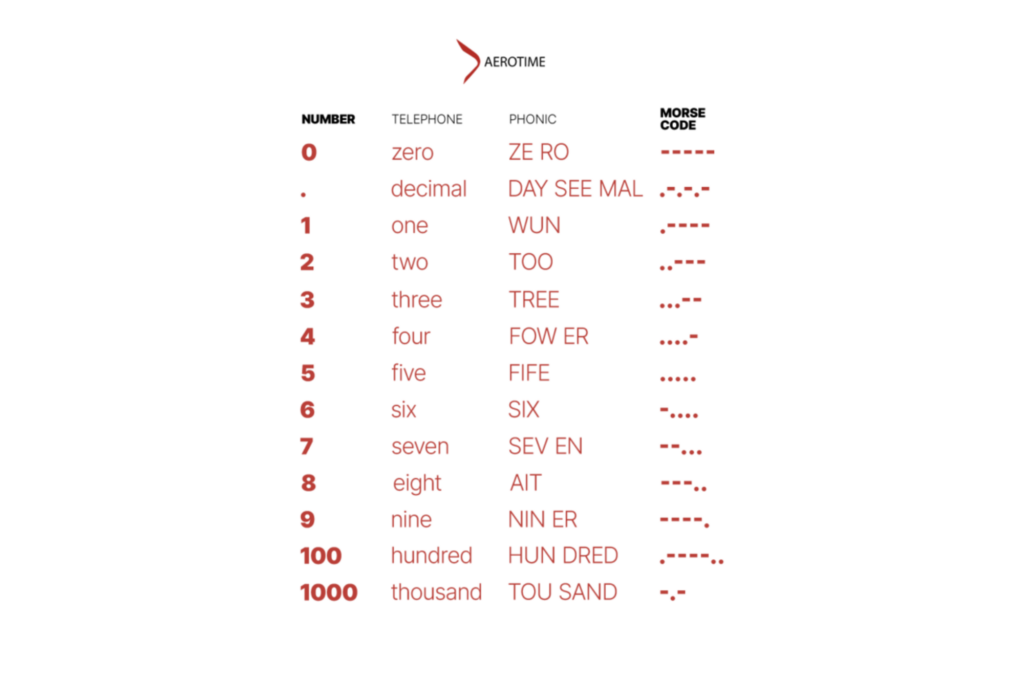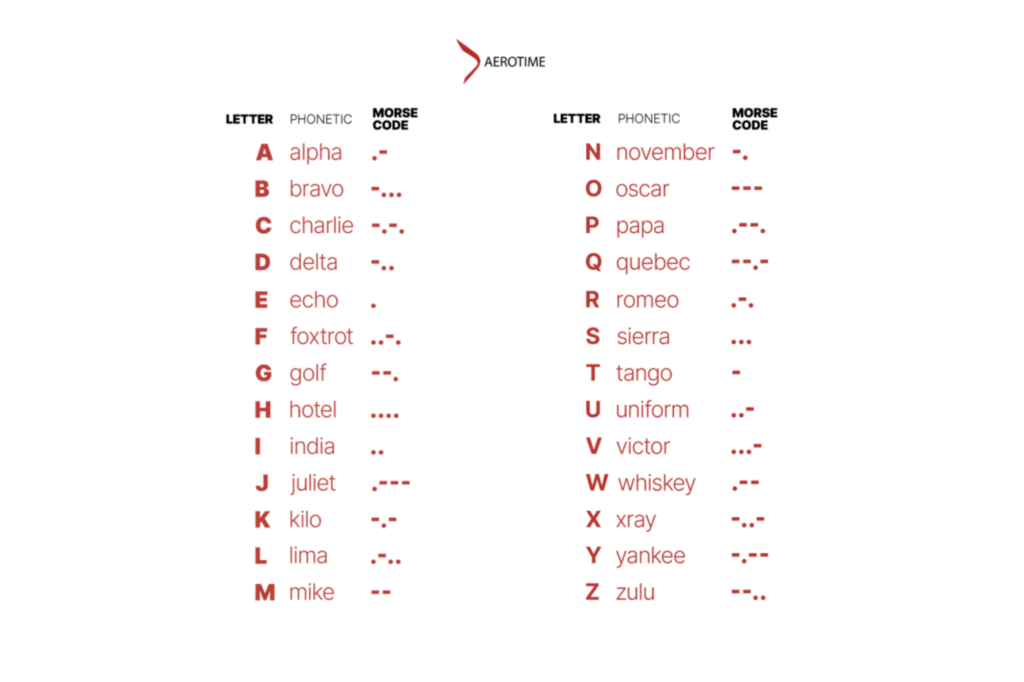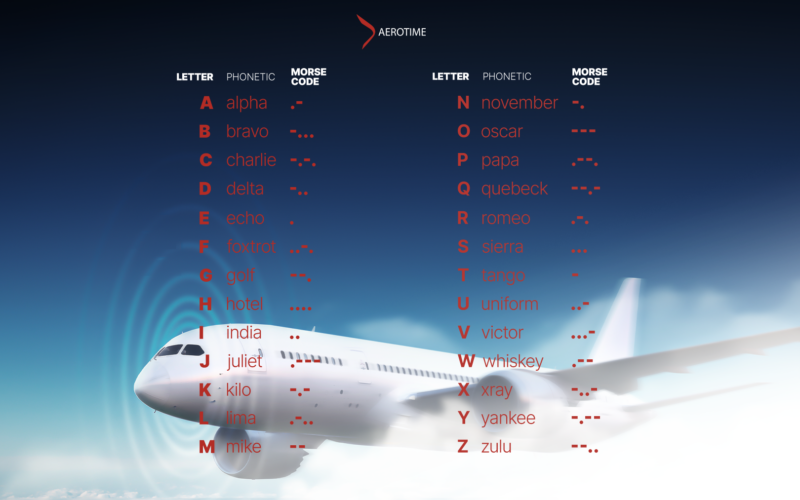Effective communication is critical to the safe operation of aircraft. When pilots talk to air traffic control, they use a standardized language known as the International Civil Aviation Organization (ICAO) Phonetic Alphabet. This alphabet was created to help pilots and air traffic controllers avoid misunderstandings when communicating via telephone or radio.
What is the ICAO Phonetic Alphabet?
The ICAO Phonetic Alphabet, also known as the NATO Alphabet, assigns 26 code words to the 26 letters of the English alphabet in alphabetical order. The words in question are: Alfa, Bravo, Charlie, Delta, Echo, Foxtrot, Golf, Hotel, India, Juliett, Kilo, Lima, Mike, November, Oscar, Papa, Quebec, Romeo, Sierra, Tango, Uniform, Victor, Whiskey, X-ray, Yankee and Zulu. The purpose of using a phonetic alphabet is to reduce the likelihood of confusion and enhance safety measures for both the aircrew and passengers during operations.
Glossary of the Phonetic Alphabet used in aviation
Have a look at how the aviation phonetic alphabet can be used to convey messages including Morse code.
Letters
| Letter | Phonetic | Morse Code |
| A | Alfa | .- |
| B | Bravo | -… |
| C | Charlie | -.-. |
| D | Delta | -.. |
| E | Echo | . |
| F | Foxtrot | ..-. |
| G | Golf | –. |
| H | Hotel | …. |
| I | India | .. |
| J | Juliett | .— |
| K | Kilo | -.- |
| L | Lima | .-.. |
| M | Mike | — |
| N | November | -. |
| O | Oscar | — |
| P | Papa | .–. |
| Q | Quebec | –.- |
| R | Romeo | .-. |
| S | Sierra | … |
| T | Tango | – |
| U | Uniform | ..- |
| V | Victor | …- |
| W | Whiskey | .– |
| X | Xray | -..- |
| Y | Yankee | -.– |
| Z | Zulu | –.. |
Numbers
| Number | Telephony | Phonic (pronunciation) | Morse Code |
| 0 | Zero | ZE RO | —– |
| . | Decimal | DAY SEE MAL | .-.-.- |
| 1 | One | WUN | .—- |
| 2 | Two | TOO | ..— |
| 3 | Three | TREE | …– |
| 4 | Four | FOW ER | ….- |
| 5 | Five | FIFE | ….. |
| 6 | Six | SIX | -…. |
| 7 | Seven | SEV EN | –… |
| 8 | Eight | AIT | —.. |
| 9 | Nine | NIN ER | —-. |
| 100 | Hundred | HUN DRED | .—-.. |
| 1000 | Thousand | TOU SAND | -.- |
Why is it important to use the Phonetic Alphabet in aviation?
When communicating using different accents or in difficult circumstances for exchanging information, confusion can arise between two individuals due to certain letters having similar sounds, for instance, M and N, or G and J. Using the phonetic alphabet helps to minimize any misunderstandings between the cockpit and the tower.
In addition to assigning the letters, the ICAO phonetic alphabet also designates specific numbers. Like the letters, the objective is to prevent any misunderstandings with numbers that have a similar sound. Hence, some numbers are pronounced differently from their standard English pronunciation, such as three as tree (tri), five as fife, and nine as niner. For instance, when referring to an aircraft tail number like M345N over the radio, it would be pronounced as “Mike, tree, four, fife, November.”
The adoption of the ICAO alphabet allows pilots to effectively convey their location, estimated time of arrival, crew service requirements and aircraft tail number.
Implementation of the aviation Phonetic Alphabet
For a better understanding, let’s assume that a pilot needed to report their location as latitude 40 degrees, 30 minutes north and longitude 74 degrees, 10 minutes west. In such a situation, they would use the ICAO phonetic alphabet and say “Four Zero degrees, three zero minutes North; Seven Four degrees, one zero minutes West” to ensure clarity of communication.
If they needed to report their estimated time of arrival as 3:25 PM, they would say “Tree Two Five, one five two five Zulu” (Zulu referring to the Coordinated Universal Time or UTC).
It is worth noticing that At Hartsfield-Jackson Atlanta International Airport (ATL), the phonetic alphabet’s use of “Dixie” instead of “Delta” serves to prevent any confusion with Delta, the airline. Due to the significant amount of Delta Airlines traffic at the airport, the decision was made to adopt an alternative name or word that would be recognizable and clear to pilots from all countries.


Historical background
In 1948 and 1949, ICAO’s language sector collaborated with Jean-Paul Vinay, a linguistics professor at the Université de Montréal in Canada, to create a new spelling alphabet. The fundamental requirements for the chosen words were that they had comparable spellings in English, French, and Spanish and were valid words in each of these languages.
ICAO established its phonetic alphabet as a global standard on November 1, 1951, to communicate English letters via radio or phone. The decision to create a single universal alphabet was made due to dissatisfaction with the existing internationally recognized phonetic alphabet.
The existing alphabet was submitted to ICAO for review and the organization had concluded that it was not effective in communicating letters and numbers clearly, particularly in international aviation operations. As a result, the ICAO created a new, more effective phonetic alphabet that has since been widely adopted by aviation organizations around the world.
In the wake of this research, as well as the feedback from all ICAO Member States, and in consultation with communication specialists, the new ICAO phonetic alphabet was adopted and integrated into the Aeronautical Telecommunications Annex 10 for application in civil aviation. The words that represented the letters C, M, N, U, and X were substituted, and the final version was approved by the Organization on March 1, 1956. It’s still utilized worldwide today.
Learn more about the NATO phonetic alphabet:

